Environmental Program
Climate Change
How is the climate changing in our region, and what will it mean for us?
The Port Gamble S’Klallam recently completed a detailed climate change impact assessment. The full report is available for download here. These were some of our key findings:
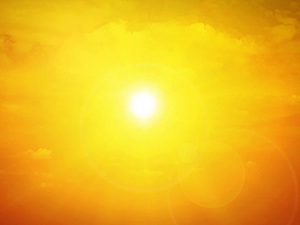
Warmer Temperatures
By the 2050s, temperatures in Washington State are projected to be about 6°F warmer on average compared to the 1950-1999 period. We expect to have more heat waves in the summer.
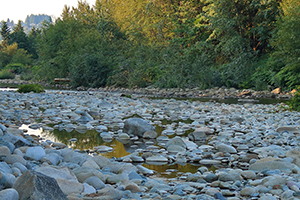
Rain & Drought
We expect to experience more heavy rains, wetter winters, and drier summers. We are likely to have more droughts like the one we experienced in 2015.
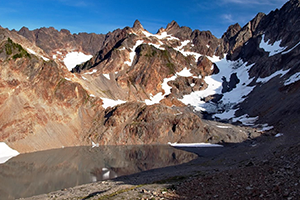
Glaciers, Streams & Rivers
Glaciers in the Olympic Mountains lost 34% of their area between 1980 and 2009. The snow in the Olympics and Cascades is melting earlier in the year. We expect to see heavier winter stream flows and lower summer flows.

Wildfires
We may see more wildfires than we are used to seeing in Western Washington, which can reduce air quality and damage important habitats for animals like elk and bear.

Sea Level Rise & Bluff Erosion
The sea level has already risen by about 8 inches over the last century. It could be 4.6 feet higher in 2100 compared to 2000—or even higher. The rising sea level will cause flooding in places like the Point Julia salt marsh and boat launches, and it may also increase bluff erosion. Fortunately, most of our facilities and houses are out of harm’s way.
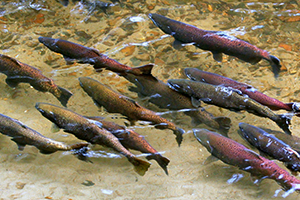
Impacts on Salmon
Lower streamflows and warmer water temperatures will stress salmon and hinder migration. Coho and stream Chinook will likely be more vulnerable to climate change impacts than chum and pinks.
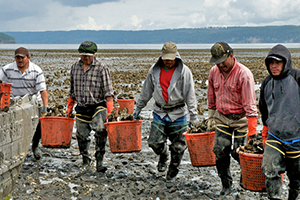
Impacts on Shellfish
Shellfish habitat is being degraded by sea level rise, and ocean acidification (ocean pH drops as excess CO2 from the atmosphere is absorbed) is making it harder for shellfish to form their shells.
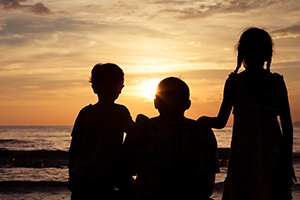
Impacts on Health
Intense heat waves, respiratory problems, allergens, and cases of shellfish poisoning may become more common. We need to be ready, so we can keep our community members healthy.
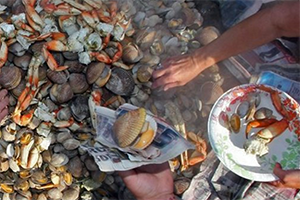
Impacts on Cultural Resources
Climate change could affect the availability of traditional foods, gathering materials, and other resources that we use for our ceremonies and customs.
What can we do to be ready for climate change?
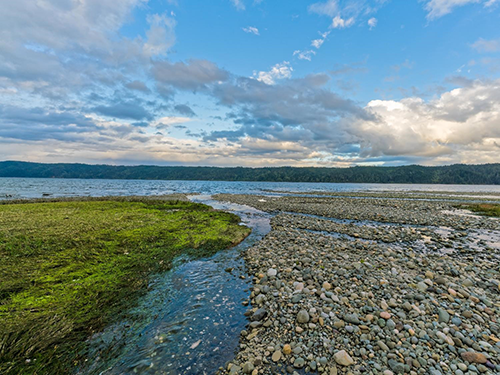 By looking ahead and taking steps to increase our resilience in the face of these changes, we can protect our traditions, our community, and our resources for many generations to come.
By looking ahead and taking steps to increase our resilience in the face of these changes, we can protect our traditions, our community, and our resources for many generations to come.
For example, we can:
- Continue working to restore salmon habitats.
- Consider sea level rise and bluff erosion when planning new projects and choosing locations for new houses.
- Maintain the self-reliance and community cohesion that makes us strong.
We will be doing further climate adaptation planning work. For more information or to get involved, please contact the Environmental Program.
“The science is here in front of us. We all need to be educated and try to figure out solutions. We have to protect the resources for the next generations.”
~Chairman Jeromy Sullivan
Resources
- Background chapter formatted May 2017
- Observed and projected changes chapter formatted May 2017
- Sea level rise and bluff erosion
- Nonlinear chapter formatted May 2017
- Climate change impacts on Salmon
- Salmon chapter formatted May 2017
- Forage fish chapter formatted May 2017
- Climate change impacts on Shellfish
- Shellfish chapter formatted May 2017
- Forest resources chapter formatted May 2017
- Wetlands chapter formatted May 2017
- Birds chapter formatted May 2017
- Mammals chapter formatted May 2017
- Climate change impacts on Wildlife
- Infrastructure chapter formatted May 2017
- Health chapter formatted May 2017
- Cultural resources chapter formatted May 2017
- Executive summary formatted May 2017
- HABs chapter formatted May 2017
- PGST climate impact assessment report 0518 FINAL
- SLR special section formatted May 2017
